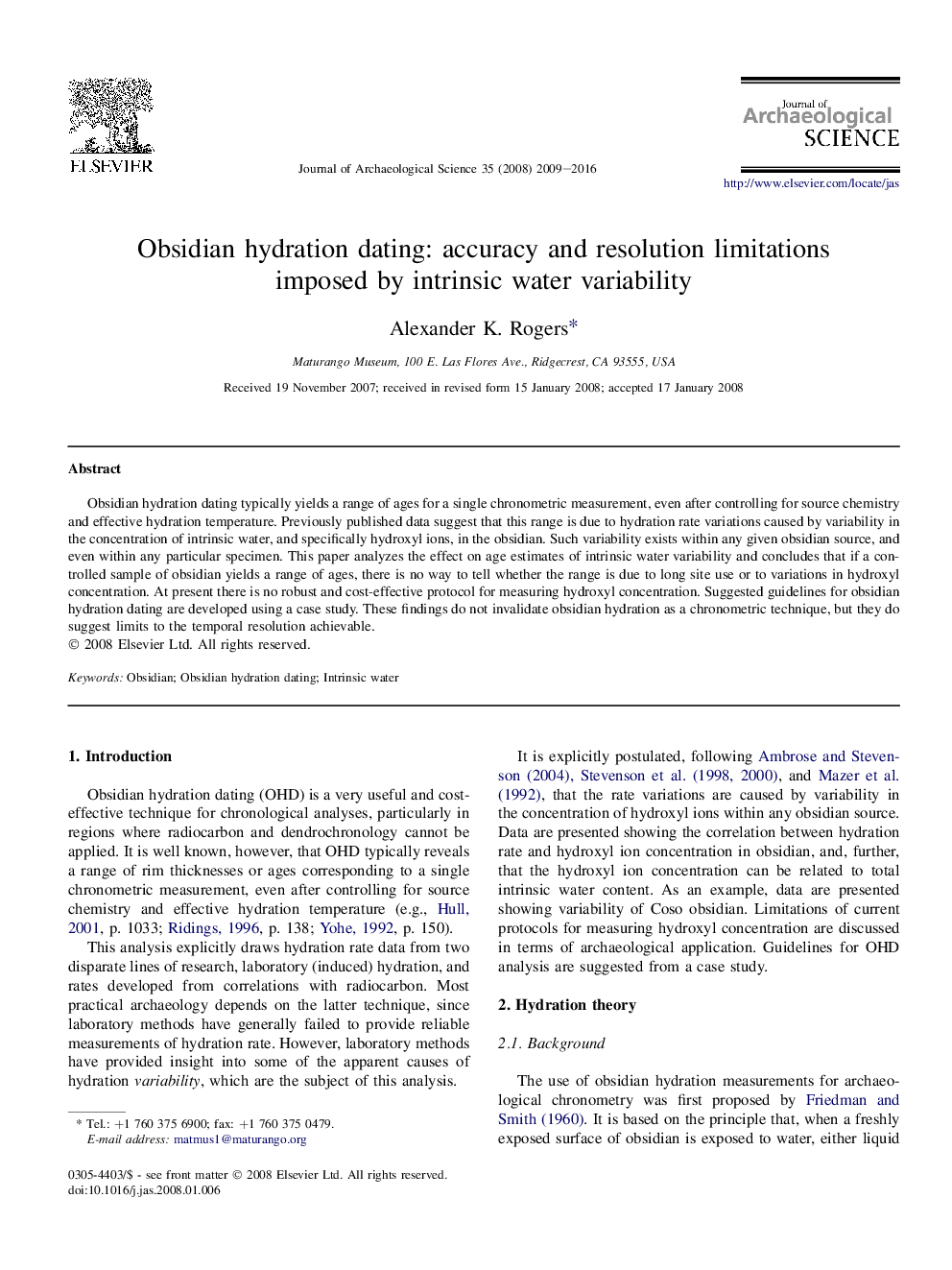| Article ID | Journal | Published Year | Pages | File Type |
|---|---|---|---|---|
| 1037266 | Journal of Archaeological Science | 2016 | 8 Pages |
Obsidian hydration dating typically yields a range of ages for a single chronometric measurement, even after controlling for source chemistry and effective hydration temperature. Previously published data suggest that this range is due to hydration rate variations caused by variability in the concentration of intrinsic water, and specifically hydroxyl ions, in the obsidian. Such variability exists within any given obsidian source, and even within any particular specimen. This paper analyzes the effect on age estimates of intrinsic water variability and concludes that if a controlled sample of obsidian yields a range of ages, there is no way to tell whether the range is due to long site use or to variations in hydroxyl concentration. At present there is no robust and cost-effective protocol for measuring hydroxyl concentration. Suggested guidelines for obsidian hydration dating are developed using a case study. These findings do not invalidate obsidian hydration as a chronometric technique, but they do suggest limits to the temporal resolution achievable.
